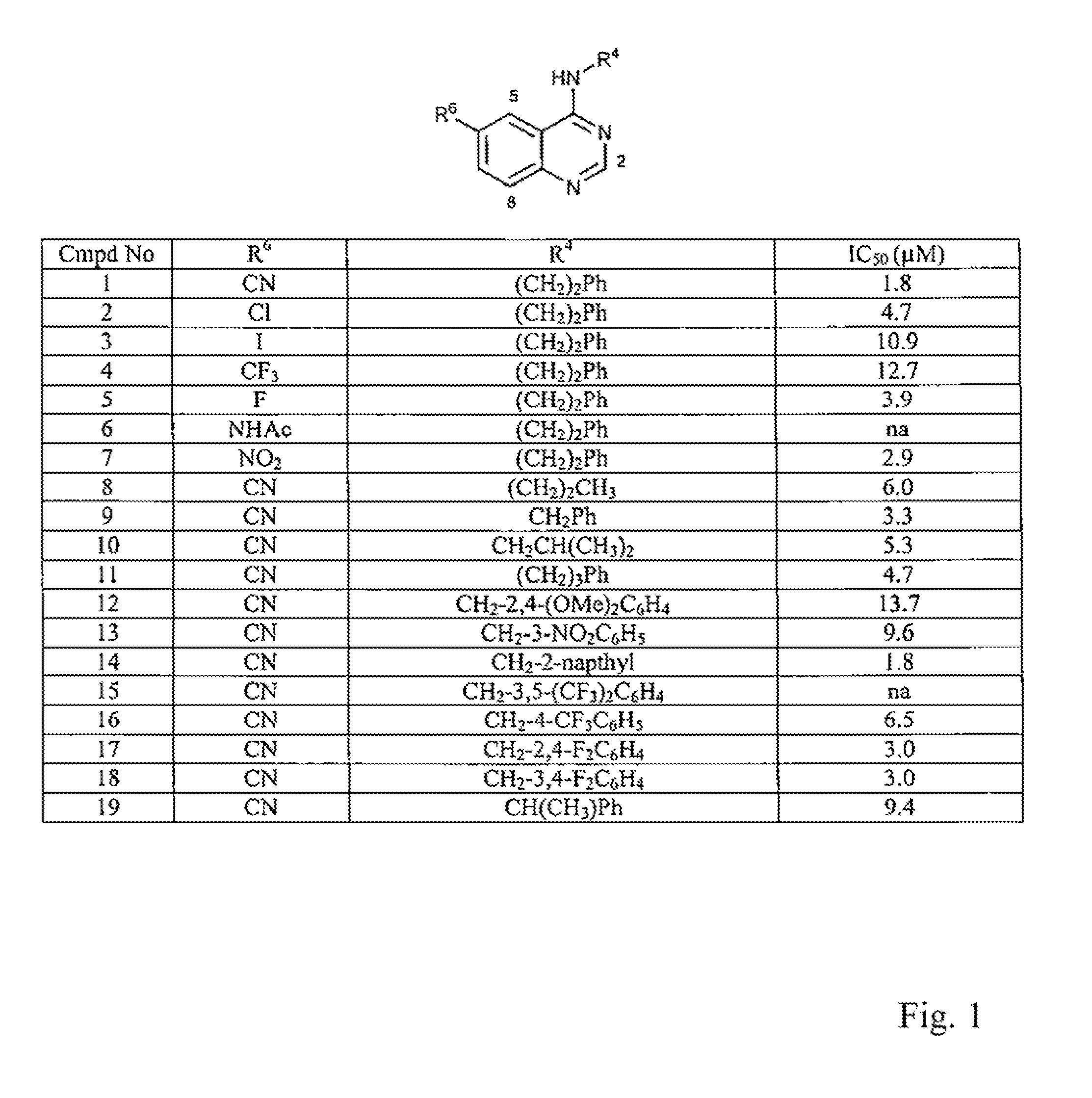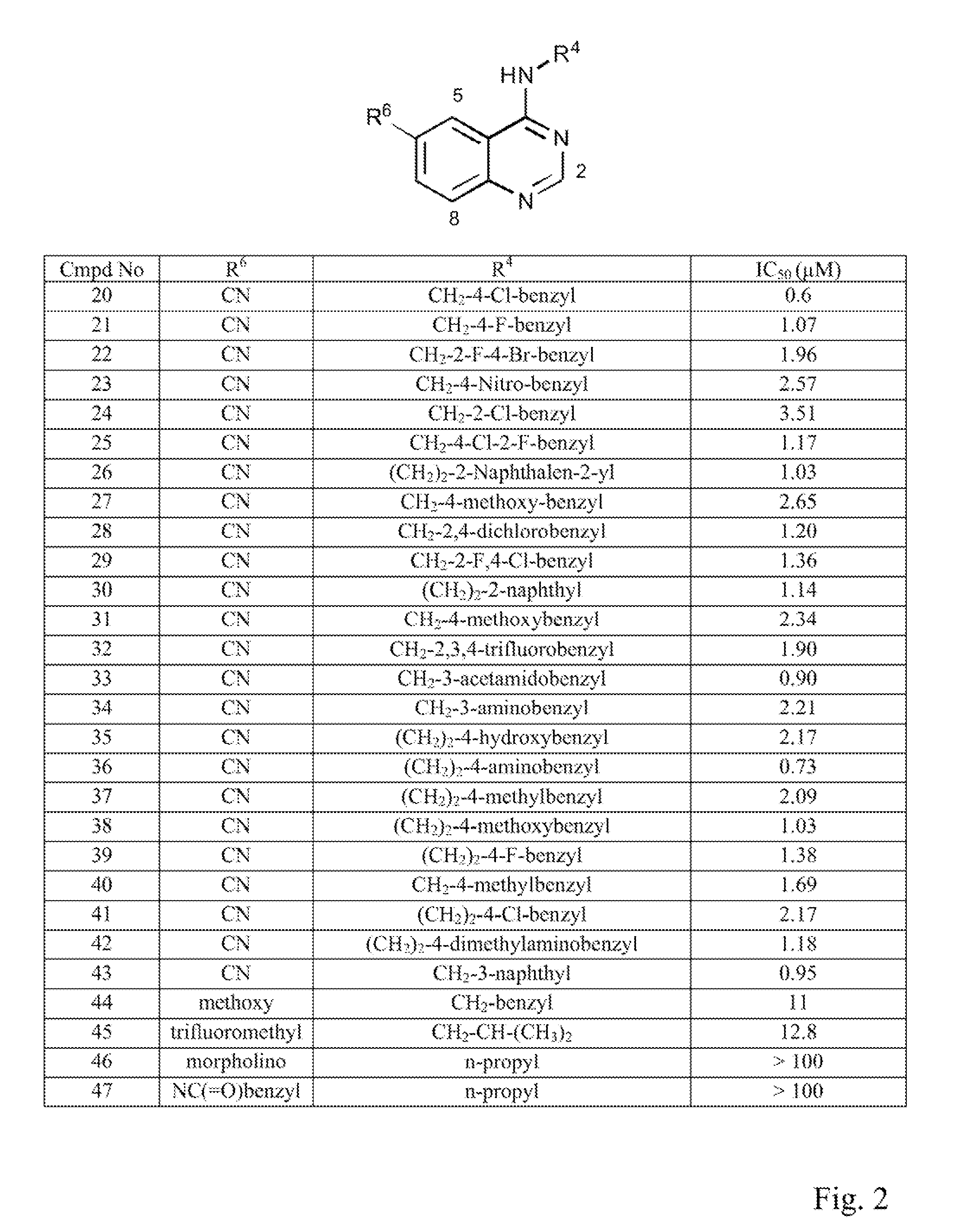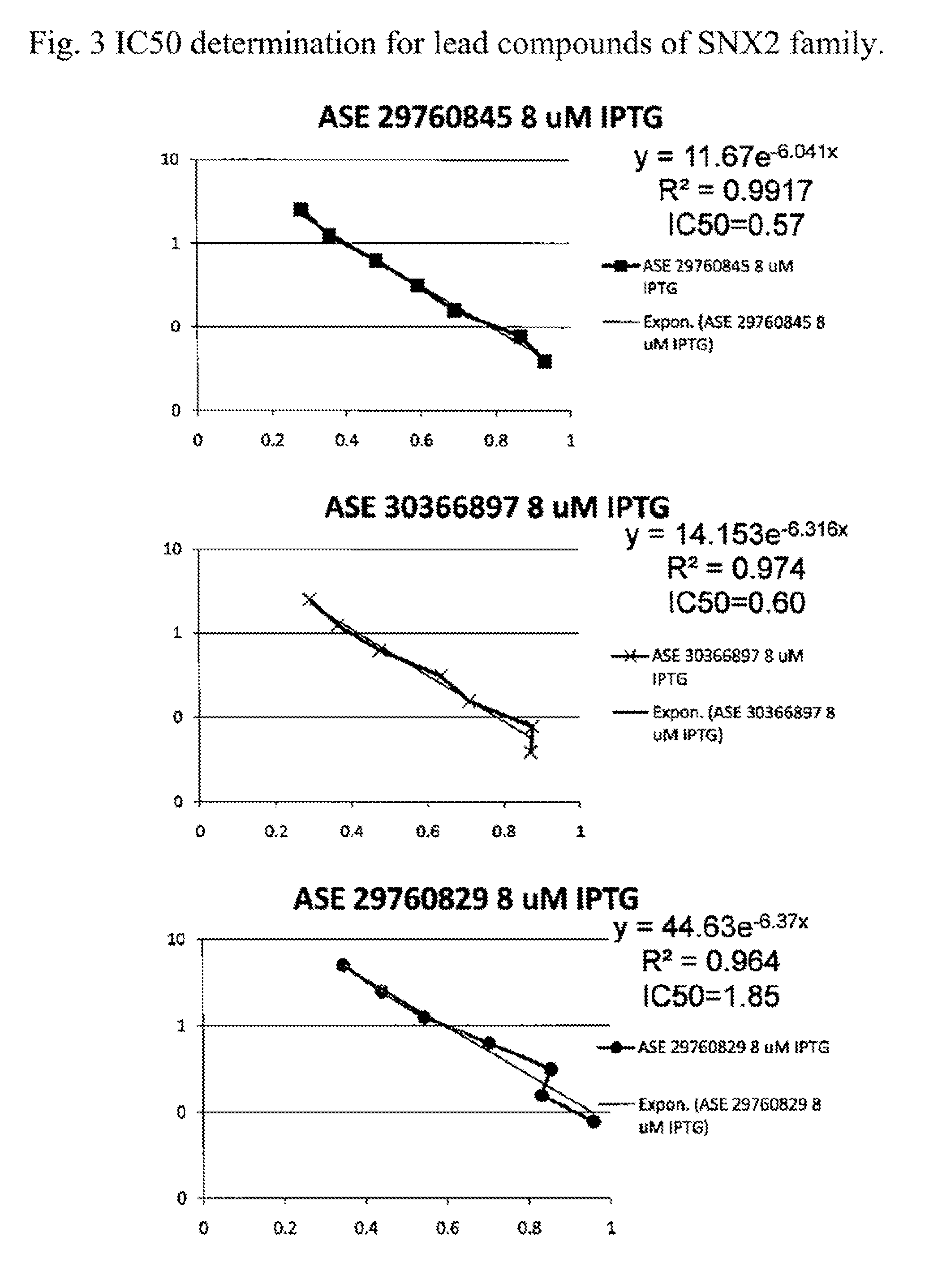CDKI pathway inhibitors and uses thereof
a cyclindependent kinase inhibitor and pathway technology, applied in the field of inhibition of the cdki pathway, can solve the problems of blocking the development of senescent morphology in fibroblasts, and achieve the effects of strong and rapid inhibition, increasing the therapeutic efficacy of conventional anticancer agents, and enhancing the ability of cdki proteins
- Summary
- Abstract
- Description
- Claims
- Application Information
AI Technical Summary
Benefits of technology
Problems solved by technology
Method used
Image
Examples
example 1
Determination of IC50 Values for CDKI-Pathway Inhibitor Compounds
[0073]The lead optimization series compounds have been tested for the ability to prevent the induction of transcription by p21 in HT1080 fibrosarcoma cells, as described in US20080033000. Briefly, the reporter cell line described in the above-referenced application, which carries IPTG (isopropyl-β-thio-galactoside)-inducible p21 gene together with a p21-inducible promoter driving the expression of Green Fluorescent Protein (GFP) was plated in 96-well plates, at 2000 cells per well for the no-IPTG arm of the assay and at 5000 cells per well for the IPTG arm of the assay. To induce the maximal levels of p21, IPTG was added to 50 μM concentration. Serial 2-fold dilutions of the tested compounds were added in quadruplicates to wells with and without IPTG, ˜10 min after IPTG addition. After culturing under standard cell culture conditions for 72 hours, GFP fluorescence and Hoechst 33342 staining of cellular DNA (a measure o...
example 2
Inhibition of Tumor-Promoting Activity of Irradiated, Senescent Fibroblasts
[0075]As discussed by Roninson (Cancer Lett. 179, 1-14, 2002), all the treatments known to induce the production of tumor-promoting secreted factors by cancer-associated stromal fibroblasts activate the CDKI pathway, including exposure to ionizing radiation and the induction of senescence. Since this pathway is the target of compounds according to the invention, such compounds may be the first agents to target tumor-supporting activities of cancer-associated fibroblasts. Some of the fibroblast-activating treatments include exposure to ionizing radiation and the induction of senescence through various means (Krtolica et al., Proc. Natl. Acad. Sci. USA 98, 12072, 2001). We have adopted a 96-well assay for anti-apoptotic activity that we have previously used with p21-expressing fibrosarcoma cells (Chang et al., Proc. Natl. Acad. Sci. USA 97, 4291-4296, 2000), to measure a tumor-promoting activity of normal proli...
example 3
Inhibition of HIV Replication
[0077]The following assay was carried out by James McSharry at Ordway Research
[0078]Institute at the request of Igor Roninson. HIV replication was assayed in a cell-to-cell model of HIV-1 transmission using chronically infected H9IIIB as donor cells cocultivated with uninfected CEM-ss leukemia cell line as recipient cells. 1 ml of RPMI1640 medium (+10% Fetal Bovine Serum+Penicillin / Streptomycin+glutamine) containing 104 H9IIIB cells was mixed with 1 ml of the same medium containing 106 CEM-ss cells. The mixture was spun at 1500 rpm for 5 min, the supernatant was aspirated, and cell pellets were suspended in 10 ml of the same media containing the following final concentrations of compound 1: 5, 2.5, 1.25, 0.625, 0.3125 and 0 μM (diluted from a stock solution of 500 μM in 25% DMSO). The suspended cells were placed into a 25 cm2 flask and incubated at 37° C., 5% CO2. On day 3, the cells were counted with a light microscope and an hemocytometer after trypan ...
PUM
 Login to View More
Login to View More Abstract
Description
Claims
Application Information
 Login to View More
Login to View More - R&D
- Intellectual Property
- Life Sciences
- Materials
- Tech Scout
- Unparalleled Data Quality
- Higher Quality Content
- 60% Fewer Hallucinations
Browse by: Latest US Patents, China's latest patents, Technical Efficacy Thesaurus, Application Domain, Technology Topic, Popular Technical Reports.
© 2025 PatSnap. All rights reserved.Legal|Privacy policy|Modern Slavery Act Transparency Statement|Sitemap|About US| Contact US: help@patsnap.com



